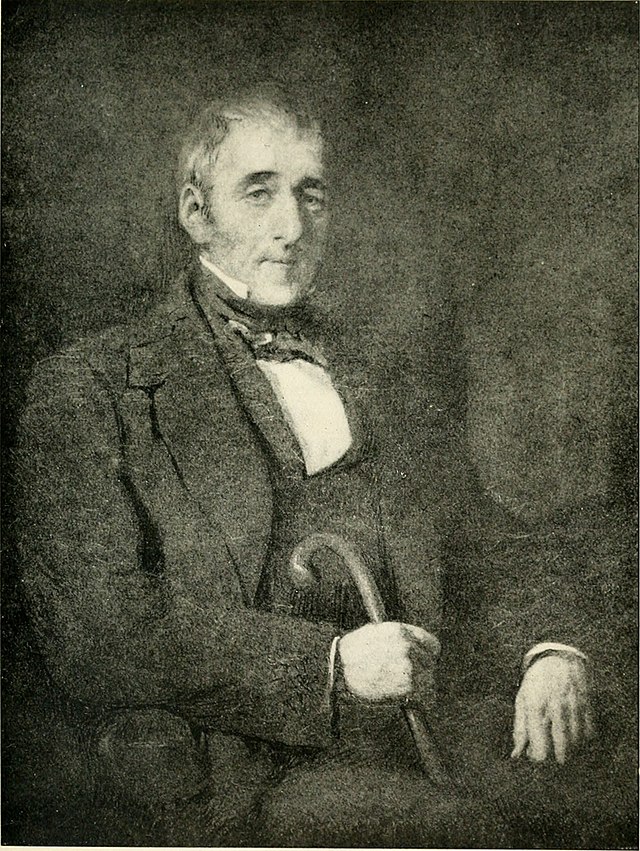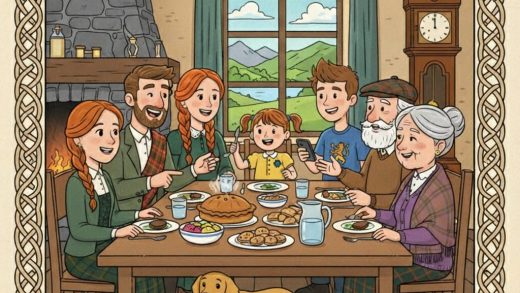
Patrick Sellar (1780–1851) was a Scottish lawyer, factor and sheep farmer. In 1811, he was employed as a factor by the Sutherland Estate in a joint (but subordinate) position with William Young. The estate had started some clearances, integral to their program of agricultural improvements. Whilst clearances in 1812 went reasonably smoothly, in 1813 Sellar failed to successfully negotiate with angry resistance in the Strath of Kildonan. A state of confrontation existed for more than six weeks and concessions ultimately had to be made by the estate to defuse the situation. In 1814, Sellar had the job of clearing some of the residents of Strathnaver. His actions here gave rise to a number of charges brought by the Sheriff-substitute Robert McKid, who was an enemy of Sellar’s. The most serious of these was a culpable homicide. Sellar was acquitted at his trial in April 1816 but has remained as the focus for much of the anger and indignation arising from the clearances. Sellar and Young were replaced by a new factor later in 1817, and Sutherland estate continued with even larger clearances, particularly in 1818-1820.
Sellar remained on the Sutherland estate as a tenant sheep farmer, becoming successful and well respected by others in the sheep and wool sector. In 1838 Sellar bought a sheep farm at Morvern in Argyll, thereby becoming a landowner.
Sellar was keen to express his opinions on the management of the Highlands, writing highly emphatic letters on the subject. He never deviated from his view that the Highland clearances were the correct course of action. As a lawyer he had had a very confrontational manner, clearly enjoying dispute and, by his own admission, being too willing to break someone in the courts. His precise view of the law is, in the eyes of some historians, his most believable defence against the charges on which he was tried – that he would always follow the process of law precisely.
Early life and career
Patrick Sellar was born in Elgin in Morayshire, in December 1780. This low-lying coastal agricultural area was at the forefront of an agricultural experiment in northern Scotland, and Sellar’s family was involved in agricultural improvement in the Northeast of Scotland between 1760 and 1800. Sellar’s father, Thomas, was the son of a Banffshire stonemason who, in the more accessible Scottish education system, was able to send Thomas to Edinburgh University to study law. Thomas then returned to Elgin as a trained solicitor and found work in the country estates of the region. He soon became the leading solicitor of the area, building up a fine reputation and a status much advanced from his father’s lowly origins.
Patrick Sellar also studied law at Edinburgh. He then trained in his father’s law practice, engaged in work for landowners who were improving and rearranging their farmlands, putting in drainage and building new farm buildings – especially on the cereal farms. Here Sellar saw in operation the theories he had learnt at Edinburgh University. The ideas of Adam Smith and Dugald Stewart were becoming dominant when the younger Sellar was a student. Given this educational environment, Sellar came to think of himself as a man of science and a product of the enlightenment.
His father’s business provided some degree of training for the factors on the Seafield estate, a major client of Thomas’s law firm. Among these trainees were Cosmo Falconer and Robert Mackid, both of whom Patrick encountered when he moved to Sutherland.
Patrick Sellar was clearly influenced by the upwardly mobile story of his family; his grandfather had been a cottar in the hills of Banff but was cleared by an improving landlord. Patrick interpreted this as a moral tale (which he was known to share with others): the shock of eviction setting his family on the path of self-improvement.
Sellar died in Elgin, Moray in 1851 and is buried in Elgin Cathedral.
Discover more from WILLIAMS WRITINGS
Subscribe to get the latest posts sent to your email.





I’d like to learn where the McTaggart’s (my family lineage) sided during the Campbell..situation. Any idea how to find this information? Hope you are well..and cheers
Hi friend.I will do some research for you, and let you know. thanks for the visit.
Looking forward to what you might find! Thank you!
pleasure mate..
Thanks very much, you are welcome to copy my photo if you like. I should also think there are many of him on google, but be aware of copy written material..